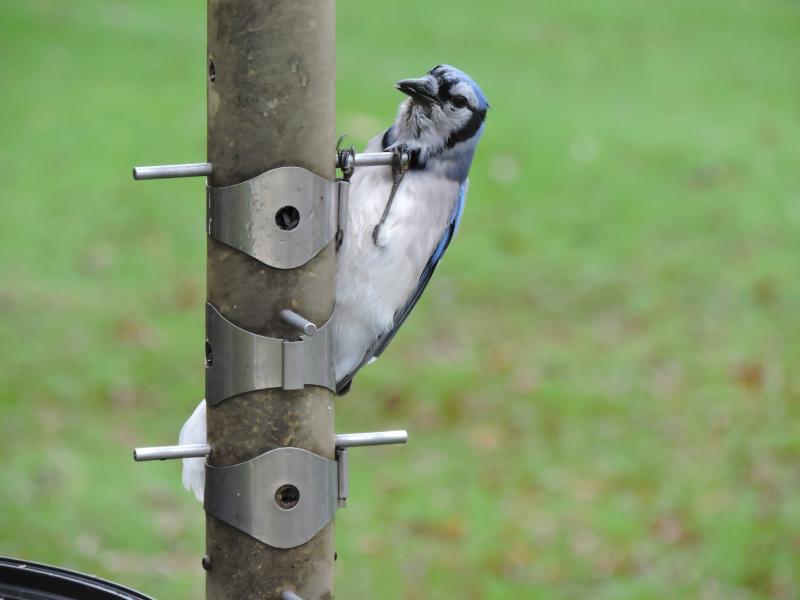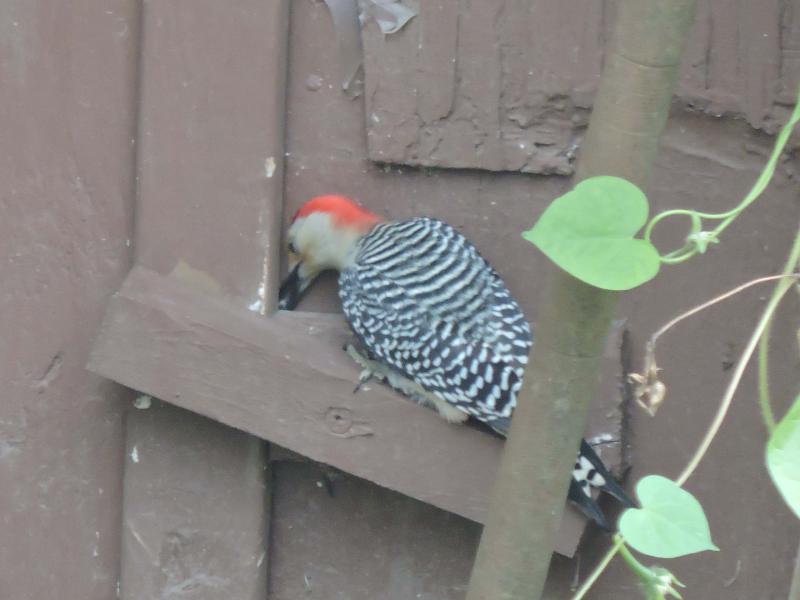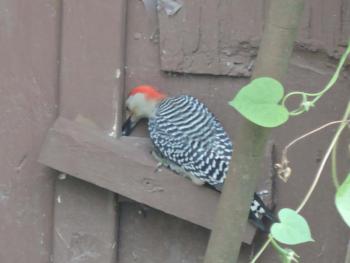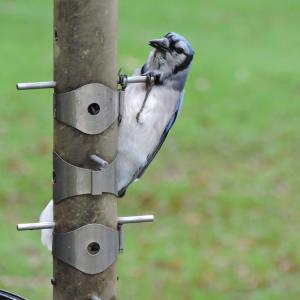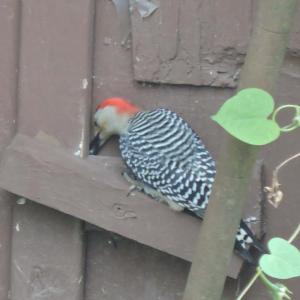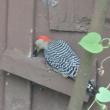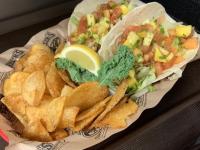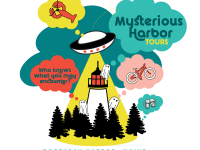Birds Doing Pull-ups and Drinking Milk?
Birds are clever creatures. The more you watch them — and the more that scientists study them in detail — the more we learn just how clever they are. Mom Wells has been watching some of the birds in her Damariscotta backyard very closely of late. She sent us a few photos of a few of the ways that some of the birds she sees daily have learned to take advantage of her recent bird food offerings.
Blue jays, like their close cousins the crows and ravens, are birds we all probably recognize as being particularly clever. Mom Wells noticed one day that the blue jays in her backyard found that they were too tall to easily get the sunflower seeds from the tube feeder if they stood upright on the metal perches like other birds. Soon they figured out that if they hung on the horizontal rods in a particular way (like a person doing pull-ups) and wedged their tail against the feeder, they could easily reach their bills into the opening and take out the seeds.
Her resident red-bellied woodpecker found it difficult to manipulate the sunflower seeds that it picked up from one of her other feeders. To her surprise, the bird discovered a particular nook on her shed door where it places the seed and then hammers it to get the juicy nut meat out of the shell to consume.
These are just two examples of the many ways birds learn and adapt to survive.
One of the famous stories of learning in birds was initially noticed in the first half of the 1900s in England. Back then, milk was delivered in glass bottles with foil tops to doorsteps in the early morning hours. When they came out to pick up the milk, many people made the unhappy discovery that someone or something had pierced the foil and consumed much of the cream at the top.
Eventually someone did some detective work and found out that the culprits were chickadee-like birds called blue tits. It was thought to be a behavior that birds learned from each other. This would explain why this clever trick eventually came to be seen in blue tits across much of England. In modern times, some researchers questioned whether birds learned this behavior by watching other birds and suggested that all the birds independently had come up with the same behavior just from each going through a process of trial and error. One skeptic of the original observational learning idea even tried a simple experiment with black-capped chickadees that seemed to support their notion.
But a few years later a more sophisticated experiment with blue tits confirmed that the birds do watch each other and learn new behaviors. In fact, even after the researchers removed the puzzle that birds learned to solve over many months, the birds remembered how to solve the puzzle to get the food. New birds that had never seen the puzzle learned to do it in the same way that their compatriots did even though there were actually two ways to solve the puzzle and get the food reward.
There’s a lot going on in the heads of the birds we so love to watch. We’re wondering if blue jays everywhere have learned to feed using the “pull-up” technique Mom Wells noticed in her backyard. How many other fascinating bird behaviors are there out there for us to learn about?
Jeffrey V. Wells, Ph.D., is a Fellow of the Cornell Lab of Ornithology and Vice President of Boreal Conservation for National Audubon. Dr. Wells is one of the nation's leading bird experts and conservation biologists and author of the “Birder’s Conservation Handbook.” His grandfather, the late John Chase, was a columnist for the Boothbay Register for many years. Allison Childs Wells, formerly of the Cornell Lab of Ornithology, is a senior director at the Natural Resources Council of Maine, a nonprofit membership organization working statewide to protect the nature of Maine. Both are widely published natural history writers and are the authors of the popular books, “Maine’s Favorite Birds” (Tilbury House) and “Birds of Aruba, Bonaire, and Curaçao: A Site and Field Guide,” (Cornell University Press).

